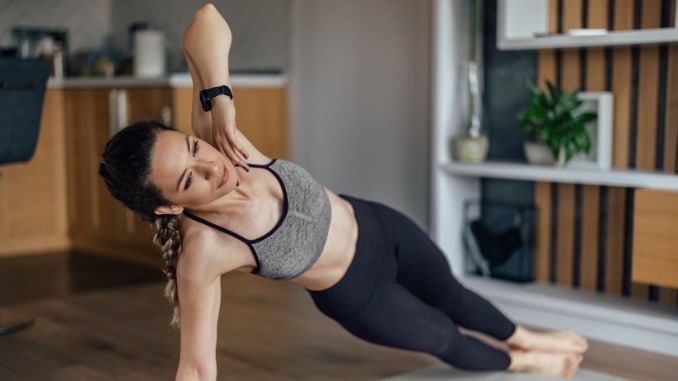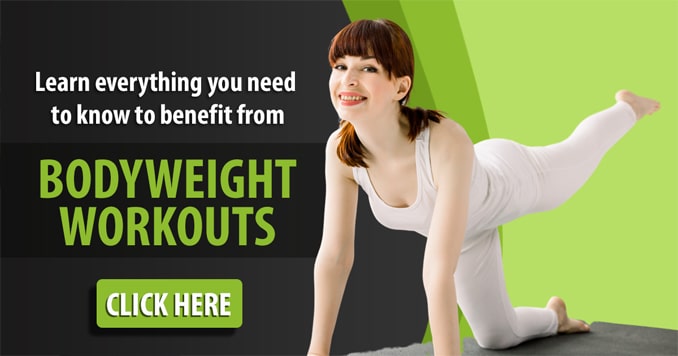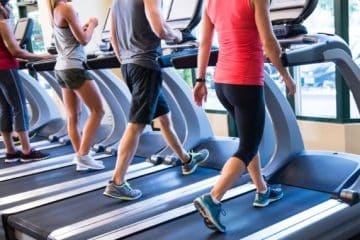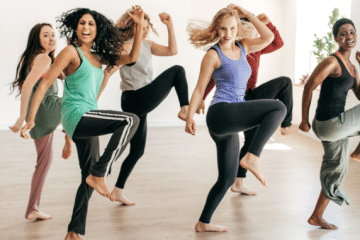Starting your fitness journey can feel overwhelming—so many workouts, so much equipment, and all the conflicting advice. Totally like me when I was first starting. But I discovered a way to get stronger, more flexible, and improve your endurance using nothing but your body weight. Calisthenics workouts, a style of exercise focused on bodyweight movements, offers exactly that.
“Calisthenics, or bodyweight exercises, focus on using your own weight to move your body and joints through a wide range of motion,” – Vonda Wright, M.D. and author of Guide to Thrive
For me, it was a perfect option, I didn't have the need for expensive gym membership or fancy machines. I was able to do it at home, in the park, or even in a small space in my office. I didn't even aim for strength training or mobility exercises, just a beginner-friendly routine that doesn’t rely on complicated equipment, but calisthenics helped me work on different training. Best of all, it's bodyweight training adaptable for every fitness level.
Let’s explore how you can start incorporating calisthenics into your daily routine, too, and why it's an ideal choice for building a strong, healthy foundation.
Benefits of Calisthenics
- No equipment needed: Improve strength, flexibility, and endurance [1] using only your body weight.
- Enhances functional fitness: Promotes balance, coordination, and agility for everyday activities.
- Improves posture: Strengthens core and back muscles [2], helping to correct posture and alleviate discomfort.
- Convenient and accessible: This can be done anywhere—at home, in the park, or also in a small space.
- Adaptable to all fitness levels: Exercises can be scaled up or down, allowing for gradual progression.
- Improves overall mobility: Increases joint flexibility and range of motion.
- Supports sustainable, long-term results: Easy to stay consistent without relying on expensive equipment or gym memberships.
Beginner Calisthenics Workout Routine for Strength and Flexibility
While some calisthenics, like pull-ups, require equipment, focusing on bodyweight movements such as push-ups, squats, and planks allows for a full-body workout anywhere without special gear, making it perfect for beginners [3].
Warm-Ups:
1. Overhead Stretch

- Begin in an upright standing position with your feet hip-width apart, while maintaining good alignment with your head, shoulders, hips, and legs.
- Engage your core.
- Inhale through your nose and extend both arms overhead, arching your back slightly as you reach for the ceiling.
- Exhale through your mouth as you lower your arms to the starting position.
- Repeat the movement with 5 repetitions.
2. Arm Circles
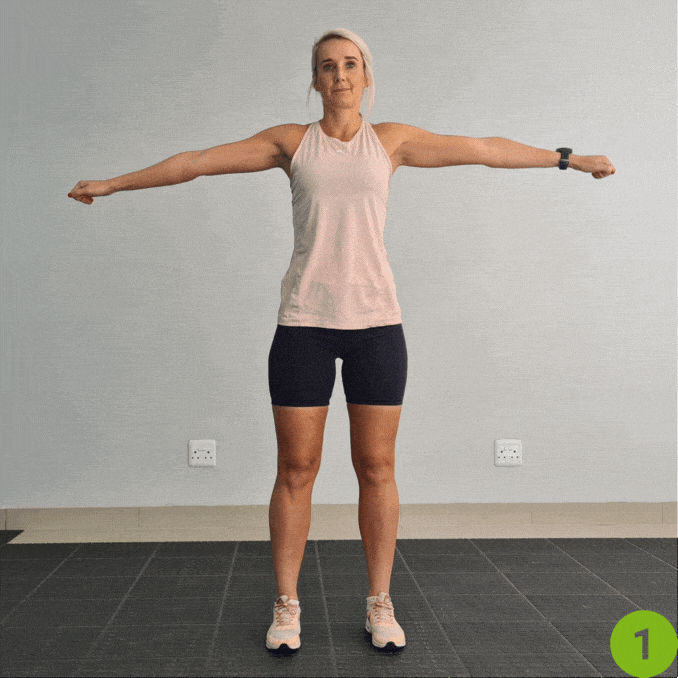
- Begin in an upright standing position with your feet hip-width apart, while maintaining good alignment with your head, shoulders, hips, and legs.
- Engage your core.
- Extend your arms out at your sides at shoulder height.
- Move your arms in small circular motions.
- Keep making the circular motion as you make the circles bigger.
- Start this morning's stretches with 1 set of 5 repetitions in each direction.
3. Leg Swings

For this exercise, you may utilize a chair, a counter, or a wall to support your balance if needed.
- Begin in an upright standing position beside a chair with your feet hip-width apart, while maintaining good alignment with your head, shoulders, hips, and legs.
- Place your left hand on your hip while your right hand is at the back of the chair.
- Engage your core.
- Raise and extend your left leg forward at hip level, bringing all your weight on your right leg, then swing your extended leg to the back and continue to swing your leg back and forth for 10 repetitions.
- Relax and then repeat the movement on the opposite side.
Workout Routines
Repeat this circuit 2-3 times, depending on your fitness level. Focus on maintaining good form over speed to maximize results and avoid injury.
1. Push-Ups
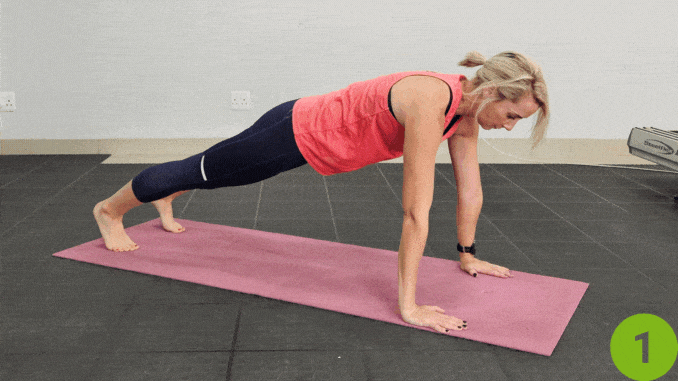
- Move into a straight-arm plank position with your hands beneath your shoulders, while maintaining a good alignment with your head, shoulders, hips, and legs.
- Engage your core, glutes, and hamstrings, then slowly bend your elbows to the side to slowly lower your body to the floor.
- Hold this position for a couple of seconds, and then raise back up to return to the starting position.
- Repeat the movement with 10 repetitions.
2. Bodyweight Squat
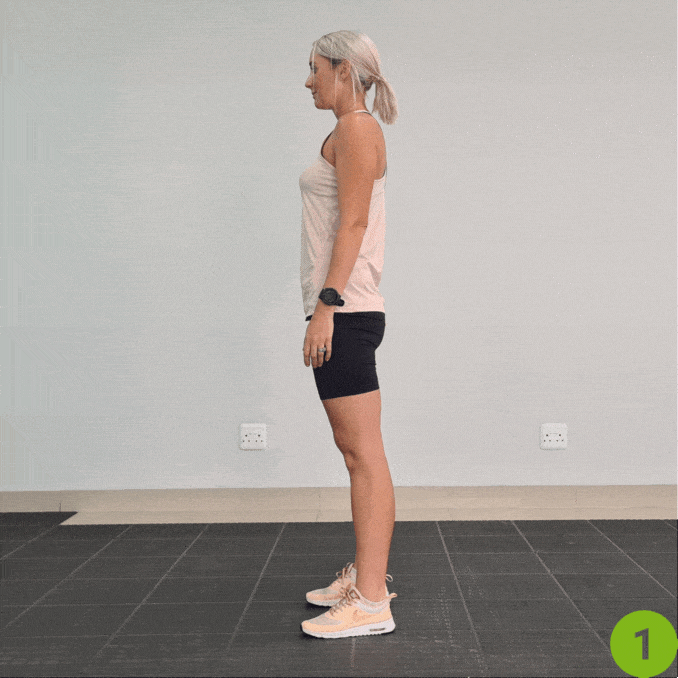
- Begin in an upright standing position with your feet hip-width apart, while maintaining good alignment with your head, shoulders, hips, and legs.
- Engage your core and then extend your arms forward at chest level.
- Bend your knees and hinge through your hips to move into a squat position.
- Keep your knees behind your toes.
- Raise back up to an upright standing position, squeezing your glutes at the top position.
- Repeat the movement.
- Start with 1 set of 10 repetitions.
3. Lunges
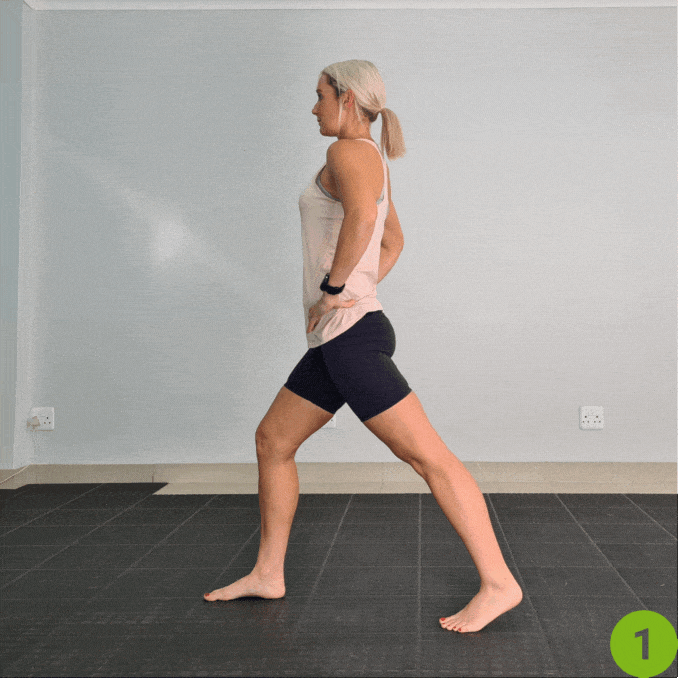
For this exercise, you may utilize a chair, a counter, or a wall to support your balance if needed.
- Begin in an upright standing position with your feet hip-width apart, while maintaining good alignment with your head, shoulders, hips, and legs.
- Engage your core.
- Take a big step back with one foot and then lower your back knee down towards the floor.
- Hold the position for a couple of seconds, then step back up to return to the starting position and repeat the movement on the opposite side.
- Start with 1 set of 10 repetitions on each side.
4. Straight Arm Plank
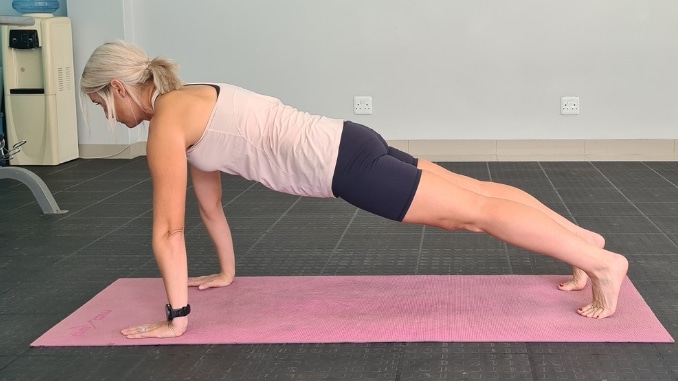
- Move into a straight-arm plank position with your hands beneath your shoulders, while maintaining a good alignment with your head, shoulders, hips, and legs.
- Engage your core, glutes, and hamstrings.
- Hold this position for several deep belly breaths, in through your nose and then out through your mouth.
5. Bird-Dog
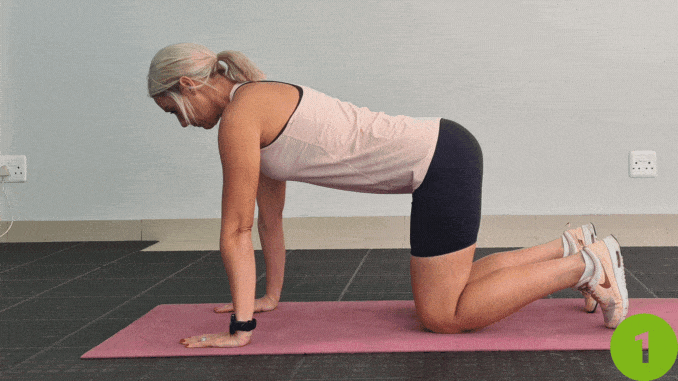
- Begin in a 4-point position, with your hands underneath your shoulders and your knees underneath your hips.
- Contract your abdominal area.
- Take a deep breath and lift your one arm to be in line with your shoulder as you extend your opposite leg behind your body.
- Keep your hips and shoulders parallel to the floor.
- Hold the position for 10 seconds.
- Relax and then return to the starting position.
- Repeat the movement on the opposite side.
Cool Downs
End with light stretches to improve flexibility and reduce muscle soreness. Focus on stretching your quads, hamstrings, shoulders, and back.
1. Quad Stretch
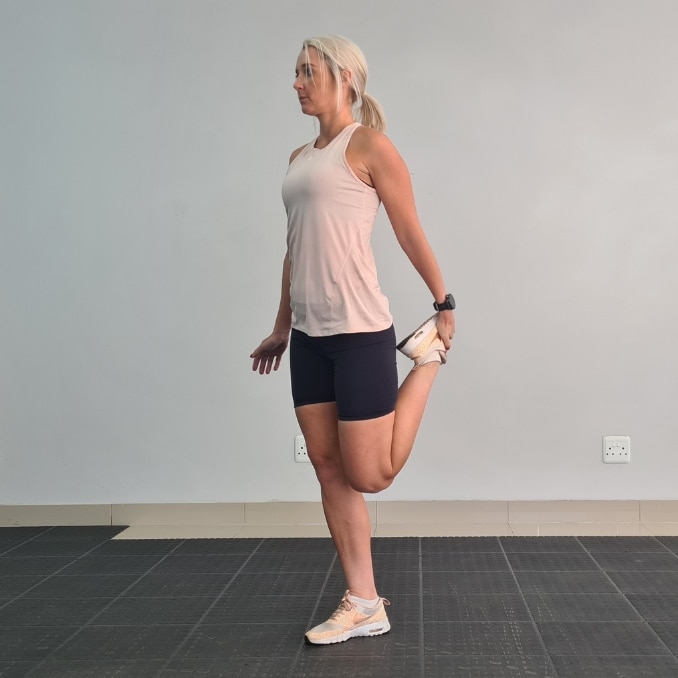
For this exercise, you may utilize a chair, a counter, or a wall to support your balance if needed.
- Begin in an upright standing position with your feet hip-width apart, while maintaining good alignment with your head, shoulders, hips, and legs.
- Engage your core, bring your heel up against your seat, and then hold your foot with your hand.
- Hold this position for several deep belly breaths, in through your nose and then out through your mouth.
- Repeat the movement on the opposite side.
2. Shoulder Rolls
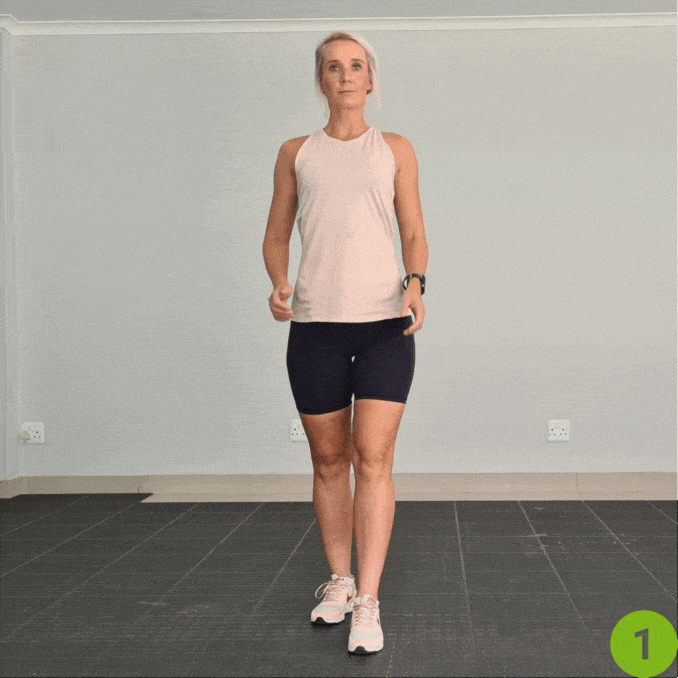
- Begin in an upright standing position with one foot forward, while maintaining good alignment with your head, shoulders, hips, and legs.
- Engage your core, lift your shoulders upward, then roll your shoulders back until you feel resistance in your shoulder blades.
- Relax and lower your shoulders to the starting position.
- Repeat the movement in the opposite direction.
- Perform with 1 set of 10 repetitions in each direction.
3. Heart Opener
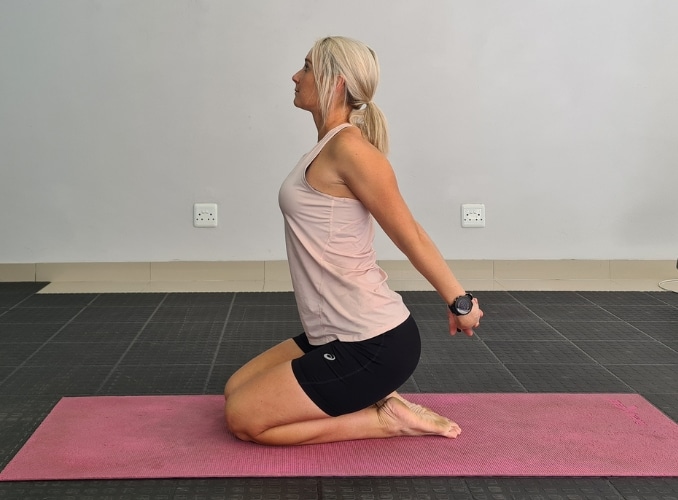
- Begin in an upright kneeling position with your knees and feet close together, while maintaining good alignment with your head, shoulders, and hips.
- Shift your hips back to rest your seat on your feet.
- Engage your core.
- Interlace your fingers behind your back and press your joined hands down to open your chest and squeeze your shoulder blades together.
- Hold this position for several deep belly breaths, in through your nose and then out through your mouth.
- Relax and repeat the movement.
Key Calisthenics Principles for Beginners
- Focus on proper forum: Proper technique is crucial in bodyweight exercises to prevent injury and achieve the best results. Concentrate on maintaining good posture and alignment to build core strength and target the right muscles.
- Progressive Overload: As you improve, gradually increase the intensity of your basic calisthenics workout, either by adding more reps and sets or trying more advanced calisthenics exercises. This concept, known as progressive overload, is key to building muscle endurance and making consistent gains.
- Consistency: Regular practice is the foundation of success. Aim to incorporate a calisthenics exercises routine multiple times a week, focusing on different muscle groups to ensure balanced development.
- Rest and Recovery: Just as important as training, rest days allow your muscles to recover and grow. This helps prevent burnout and injury, ensuring you stay on track in the long run.
- Tracking Progress: Keep a journal to record your sets, reps, and how you feel after each workout. This helps you monitor improvements like increased reps, enhanced mobility, and flexibility, or holding positions for longer. Setting clear, measurable goals, like holding a plank for 1 minute, can keep you motivated.
- Stay Motivated: Set realistic, achievable goals, and celebrate each milestone along the way. Finding a workout buddy for accountability or mixing up your routine will help you stay engaged. Acknowledging the improvements in your core strength and muscle endurance will keep you motivated throughout your fitness journey.
Conclusion
Diving deep into calisthenics when I was first starting, I've got to say, it's been a game-changer for me. The best part? You don't need any fancy gym equipment or a complicated routine. Just your body weight and a bit of dedication. It's perfect for beginners who want to build strength, flexibility, and endurance without breaking the bank.
I love how I can do these exercises anywhere, anytime. Whether it's in my living room, the park, or even on a trip, I can always squeeze in a quick workout. The key is to be consistent. Even if it's just for 15 minutes a day, sticking to it will make a huge difference.
Ready to give it a try? Start with a basic routine, focus on getting the form right, and gradually increase the intensity as you get stronger. Trust me, the results are totally worth it!
Bodyweight workouts are ideal for those who exercise at home, as they require no equipment and very little space, but are still incredibly impactful for increasing your cardio, building strength and improving flexibility. Check out this Bodyweight Workouts 101 now!
“The hardest thing about exercise is to start doing it. Once you start doing exercise regularly, the hardest thing is to stop it.”- Erin Grey

